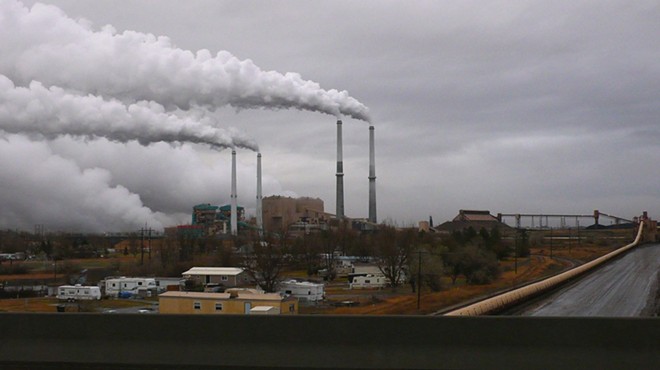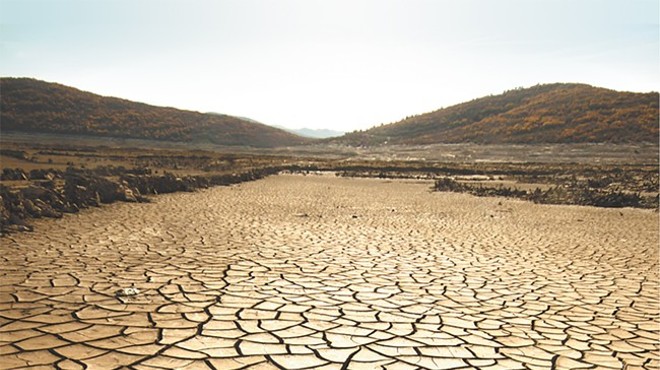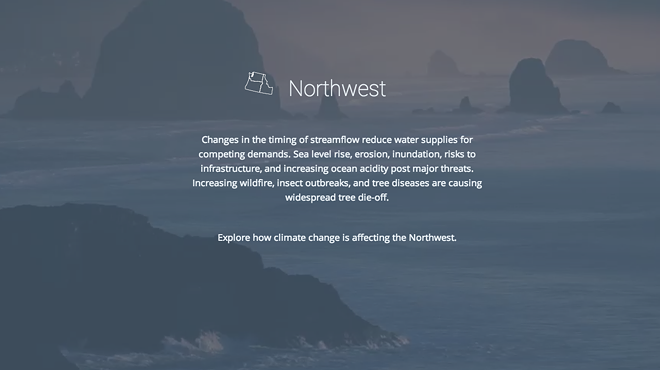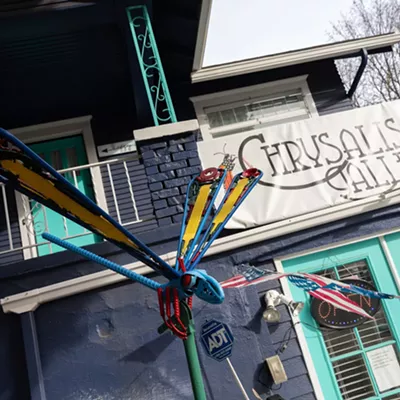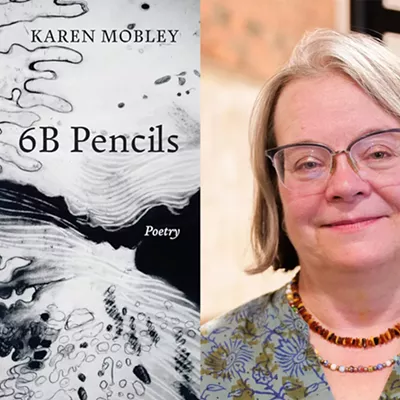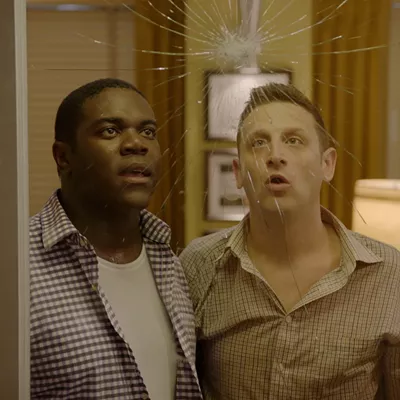Imagine this: It’s 2050. Global warming has melted the icecaps, and rising oceans are swallowing up islands and countries. Papua New Guinea is gone. So is Florida. Refugees from Bangladesh stream into India and Pakistan, two countries perpetually on the verge of conflict. The millions of refugees spur panic. And then war.
Or this:
It’s 2100. Greenhouse gases have reached the tipping point where the atmosphere traps more heat than it releases. Runaway warming begins turning the world into a hot, dead marble like Venus. No one on Earth can stop it...
But why go with the doomsday, sci-fi scenarios? Let’s stick to the evidence and what scientists think they can establish for certain.
So, what if:
It’s 2050 and it’s been a grueling summer. Summers and winters in Eastern Washington are on average 3 degrees warmer than at the century’s start. The snow pack melts early and leaves rivers nearly dry by summer’s end. Lower river flows hamper the dams that generate electricity. And the heat sustains more bugs: pine bark beetles eating into forests, codling moths burrowing into apples. By this point climate change is costing Washingtonians $6.5 billion per year, according to a study by the American Security Project, a think tank headed by guys like conservative former Nebraska Sen. Chuck Hagel and liberal Massachusetts Sen. John Kerry.
The 3-degrees figure comes from Nick Bond, Washington state’s climatologist. And while he says long-term projections have to be taken with a “bucket of salt,” Bond says that by 2100 Eastern Washington could be 7 degrees or 8 degrees hotter than it is now.
“We’ve kind of already made our bed,” Bond says.
After decades of talk about global warming, politicians have done little to stop the greenhouse gases that began pouring into the atmosphere at the dawn of the Industrial Age. And since 2008, when the Great Recession began choking the United States’ economy, mention of climate change has been largely verboten. In its place have come immediate needs: millions of Americans unemployed, having lost their homes and retirements.
But with much of the country still wilting under the third-hottest summer on record — plus a prominent climate skeptic changing his mind, drought declarations hitting 26 states and the CIA now analyzing catastrophe scenarios — we could look back on the summer of 2012 as the moment we finally embraced the implications of human progress.
But will our current political climate stymie efforts to address global warming? If so, can the Inland Northwest create change through its own policies?
More to the point: As the region withers, how will people adapt?
A History of Change
“I’m not very optimistic,” says Gonzaga University Associate Professor Brian Henning. “I wish I was.”
Henning, who teaches global warming ethics, says Americans would need to cut between 60 percent and 80 percent of greenhouse gases to stave off catastrophe (species going extinct, global populations being displaced). The professor practices what he preaches — he bought a house within walking distance of Gonzaga so he wouldn’t have to drive to campus — but like many others he sits in an air-conditioned office.
The average American generates 20 metric tons of carbon per year, according to a 2008 study from the Massachusetts Institute of Technology. Even an average homeless American, the study found, uses more carbon (8.5 tons) in a year than does the average global citizen (4 tons).
“You need to have a conversation about whether our habits are sustainable,” Henning says. “[Many people] like to think we can keep on pretty much as we are, if [they] just put solar panels up.”
The science is paradoxical. Greenhouse gas — the cocktail of carbon, nitrous oxide, methane and other gases found in the atmosphere — is what holds in the sun’s heat and allows life. From orbiting spacecraft, it appears as nothing more than a blue shell the width of a thumbnail. The gases occurs naturally — plants give off oxygen and take in carbon, and when those plants die, they often release the carbon again.
“The greenhouse effect is completely natural — if we didn’t have [some greenhouse gas] in atmosphere, the planet would be frozen roughly to the equator,” Henning says.
Too much greenhouse gas is equally fatal. Consider Venus, sometimes called Earth’s sister planet. The two planets share a similar size and gravity. But as a result of runaway greenhouse gas — meaning its blanket of gases continue to trap more heat than they let escape — the surface temperature of Venus can reach more than 800 degrees Fahrenheit.
The climate — the temperatures, seasons and weather patterns that surround us — has always fluctuated. So why do scientists believe humans are causing climate change this time around?
Several factors have been discarded as plausible theories, according to Henning. The changes can’t be coming from the sun, because given its current activity, we’d be getting cooler. And it can’t be from the planetary cycles that cause ice ages and warming periods, because we’re still 50,000 years away from another ice age, he says.
In the absence of other evidence, scientists believe humans are the reason the world is warming faster than ever before recorded. Technological advances in the Industrial Revolution of the mid-1800s brought factories, the internal combustion engine and the need for fuel. Fossil fuels — coal and gas, the buried carbon leftovers of trees and plants from ancient forests and swamps — satisfied this demand. In the early 1900s the number of cars burning motor fuels measured in the thousands. In 2010, the number of cars worldwide surpassed 1 billion.
“We’re just simply making that blanket — CO2, methane and nitrous oxide — thicker, trapping more heat,” Henning says.
It’s not just cars burning fossil fuel. By churning up carbon stored in the ground, agriculture — the industry tasked with feeding 7 billion mouths across the world — also contributes to greenhouse gases.
There’s been talk over the years of whether fossil fuels are really polluting the atmosphere, but climate change deniers lost a major ally this summer, when scientist and climate skeptic Richard Muller announced his findings after an extensive global warming study.
“I still find that much, if not most, of what is attributed to climate change is speculative, exaggerated or just plain wrong,” he wrote in a July 28 New York Times opinion piece. “I’ve analyzed some of the most alarmist claims, and my skepticism about them hasn’t changed.”
But, he continued, “I concluded that global warming was real and that the prior estimates of the rate of warming were correct. I’m now going a step further: Humans are almost entirely the cause.”
The irony: Muller’s research was funded by libertarian Charles Koch, one of two oil magnate brothers whom liberals blame for funding climate denial. Between 1997 and 2008, Koch Industries contributed more than $50 million to groups that deny climate change, according to a report by Greenpeace.
Muller may have changed his mind, but according to a March Gallup poll nearly half of Americans don’t believe global warming is happening right now.
A Practice That Mirrors Nature
The headquarters of Shepherd’s Grain Co. consists of a pair of rooms on the second story of a building on a dusty stretch of Highway 231 north of Reardan. The road looks dusty, but that’s only because combine operators are threshing grain and wheat stubble along the lazy hills that the highway divides. A pour of red feed flows from the spigot of a grain bin into a semi-truck as Fred Fleming walks from his house to his office. It’s a busy day for a busy guy. In addition to co-owning Shepherd’s Grain and owning Reardan Seed Co., Fleming, 63, farms the family land.
Parts of his fields are the same ones his great-grandfather farmed when he homesteaded in 1888 — the same fields his grandfather roamed with a baby Fleming in his truck.
“I always claimed that I was weaned in a 1950 pickup,” he says with a chuckle.
Decades spent farming — he started spotting for grain trucks when he was 12 — helped Fleming evolve his practices to help popularize what he calls direct seeding, also known as no-till farming.
As “a practice that mirrors nature,” direct seeding combines the seeding and fertilizing of croplands and it allows the stubble from last year’s crops to serve as fertilizer. Instead of making eight or 12 passes across the ground, Fleming’s equipment may just pass over it two or three times. Less carbon is released from disturbing the soil, and the amount of fuel Fleming has to pour into tractors is 38 percent less than before. When Fleming began 10 years ago, barely anyone in the region practiced direct-seed farming.
Now, he estimates about 85 percent of the farmers in the watershed are using the practice.
Customers have responded to Shepherd’s Grain’s image as an Earth-friendly and locally sourced crop. This year, the company expects to ship 500,000 bushels of grain. Some of that will show up in Spokane at Bennidito’s Pizza, Sweet Frostings and Main Market Co-op.
Despite being an advocate for globally conscious farming, Fleming scoffs at the doomsday scenarios, like Earth becoming another Venus. He points to advances he’s witnessed in 50 years of farming — in technology and more sustainable practices. How can scientists predict what will happen in 50 or 100 years? How can anyone predict the hot, dead mess of Venus happening here?
“I’m not going to believe that,” he says. “To me, that seems extreme. … There’s many other end-of-the-world scenarios you could come up with besides climate change.”
History of Misinformation
By the mid-1990s, politicians began to act on the consensus that global warming was real and human-made. In 1997, countries struck an agreement known as Kyoto Protocol to begin lowering greenhouse gas emissions. (Today, 84 countries, including China, India, Russia and much of Europe are signatories — but not the United States). It was a consensus that posed a grave threat to the industries — in particular, oil and coal — whose production, when burned, release once-buried carbon into the air. In looking for a reaction plan, they cribbed from an industry long experienced with damning publicity: Big Tobacco.
Using money from corporate and personal benefactors, they borrowed the playbook from tobacco companies that had spent decades spreading doubt and confusion about the danger of cigarettes, according to Connor Gibson, a research assistant with Greenpeace.
The first component, according to Gibson, was denial — global warming isn’t real. Then, diversion.
“It’s real, but we can’t do anything about it. It’s real, but we can’t fix it. It’s real, but it’s too expensive to fix,” Gibson says, ticking off arguments.
It’s a set of arguments still in vogue with politicians opposed to climate change policies. Republican U.S. Rep. Cathy McMorris Rodgers — Spokane’s congresswoman, who sits on the House Energy and Commerce committee — reflected this approach in a statement she made this summer to the Spokesman-Review. In precisely four sentences, McMorris Rodgers denied that people are responsible for climate change, said private industry must lead the way in cutting emissions, then called cap-and-trade a “Big Government” scheme that will destroy jobs. She ended by saying that reducing greenhouse gases is hopeless because of rising emission by emerging countries such as China.
Climate change deniers have also founded think tanks, published books and pressured mainstream media reporting on climate change to pursue “balance” in their stories by including skepticism about global warming. Gibson cites an example that TV viewers in the Deep South may have seen in the wake of Hurricane Katrina. Andrea Saul — currently a spokeswoman for Republican presidential candidate Mitt Romney — was then working for DCI Group, a public relations firm for Exxon Mobil, according to Gibson.
“DCI set up another firm [called] Tech Central Station to say there’s absolutely no link to Hurricane Katrina with climate change,” Gibson says. “And local news media picked it up.”
“It’s been extremely effective,” Gibson says of the doubt-sowing campaigns. “We’ve seen climate change legislation crash and burn on the global stage. The Dems don’t want to talk about it. Obama doesn’t want to talk about it. … Romney is more a climate change denier now.”
While they pursued health care reform, Democrats attempted to enact a national carbon cap-and-trade system. Cap-and-trade would set a price for units of carbon pollution generated by companies. It would also set maximum caps per year of how much carbon a company can generate, allowing those who produce more carbon to buy credits from companies who come in below the threshold.
The theory goes that while some businesses have to pay for disposal of their garbage — a restaurant, for example, pays the city to pick up its trash each week — large energy producers pollute the atmosphere for free.
“One cost of mining is getting [coal] out of the ground and bringing it to market, but [they] don’t have to pay for the exhaust [they] put into the atmosphere,” says Henning, the Gonzaga professor.
The cap-and-trade bill had the support of President Barack Obama and passed the House in June 2009; but, even though it had the support of large corporations — big companies like General Electric, Johnson and Johnson, Honeywell, Alcoa, DuPont and Dow Chemicals joined a coalition that supports cap-and-trade — the bill died in the Senate in 2010.
Close to Home
Researchers in Washington state aren’t talking about alarmist claims — they’re talking about what will happen if, as expected, our temperature bumps up just a few degrees.
By 2020, changes in climate are projected to cost Washington state close to $10 billion annually, according to a report released in April by the state Department of Ecology, due to “increased health costs, storm damage, coastal destruction, rising energy costs, increased wildfires, drought and other impacts.”
The study, commissioned in 2009 by the Washington State Legislature, isn’t an idle research document. It’s a plan for how to cope as the state morphs.
“People know how to deal with natural variability — we’ve always had droughts and floods,” says Hedia Adelsman, an executive policy advisor at Ecology. “Climate change will make these events more chaotic, but also … they’ll become much more frequent and intensive.
“Washington, if we don’t take it seriously, we will be unprepared.”
Crops are one concern.
Because of the Evergreen State’s northern latitudes, declining crop yields aren’t a huge worry, according to Chad Kruger, executive director of the Center for Sustainable Agriculture and Natural Resources at Washington State University. Instead, Kruger worries about declining quality.
“A lot of our agriculture is really driven by high quality fruits and veggies, which are more susceptible for quality issues in a change-climate” scenario, he says.
And there’s the addition of more pests eating into crops. The larvae of the codling moth, for example, seeks out fruit, gobbles through the skin and bores through the fruit, eating its way to the seeds.
“The further we get out from today, the more likely we are to get a third generation of codling moth” in a single growing season, Kruger says. That means more pesticides on the food, more expense for farmers and more chances for crop damage.
The warm weather could also bring more pine bark beetle infestations in the forests of Washington. Such beetle infestations have caused the loss of up to 1 million trees a year, according to U.S. Forest Service studies.
Warmer winters means the snow will melt earlier off the mountains. Since 70 percent of the water in western mountain regions comes from snow pack, water supply, wildlife and fisheries will suffer, according to the Ecology report. Under conservative estimates, snow pack in Washington mountains will decline by a quarter of its current average for the 2020s, by a third in the 2040s and by over half during toward the end of the century.
Hydropower production in the summer is likely to decrease about 10 percent by the 2020s, according to the report. And less water will further hurt the forests of Eastern Washington, increasing the number of forest droughts and spurring on wildfires. The report predicts the land burned annually in fires will double to around 800,00 acres in the 2020s.
Those shifts are unlikely to impact Avista’s ability to deliver electricity in Eastern Washington, according to Jessie Wuerst.
Wuerst, a senior communications manager for Avista, says water flow changes due to global warming are projected to change only minimally over the next 20 years. And because Avista supplies Eastern Washington with a mix of hydropower, natural gas, coal and renewable energy, the decline wouldn’t be directly felt in Spokane, Wuerst says.
Hope and Change
Could the Pacific Northwest tackle global warming by itself? Highly unlikely. But several states are trying, using what Henning, at Gonzaga, calls the “California” effect.
“California passes higher emissions standards, and businesses don’t want to make products especially for California,” Henning says. “So they end up adopting California standards nationally because California is such a big market.”
With this in mind, a group of western states and Canadian provinces have been laboring to assemble states for a cap-and-trade system. The Western Climate Initiative (WCI) began in 2007 as five westerns states, including Washington, teamed up to develop targets for reducing greenhouse gases. Washington and Oregon both withdrew from the plan in November 2011. Currently, only California and four Canadian provinces are part of the project.
Jerome Delvin, a state senator from Richland, sponsored the bill to remove Washington from the WCI. Delvin cites studies by the conservative Heritage Foundation that say gas prices could rise by $1.40 per gallon under cap-and-trade. And he calls it arrogant that people assume to predict the future of climate change.
“To the effect they say it’s happening, I don’t think so,” Delvin said recently over the phone.
In a statement to The Inlander responding about whether he’d support rejoining the WCI, former congressman and Democratic gubernatorial candidate Jay Inslee wouldn’t say. Nor did Inslee mention climate change; he spoke instead of working to creating more clean energy jobs.
Calls and emails asking the same question of Republican gubernatorial candidate, Attorney General Rob McKenna, were not returned.
Wuerst, the Avista spokeswoman, says her company tracks the progress of cap-and-trade proposals. Noting the concern of some proposals as being overly complex, Wuerst says Avista is already working to reduce the region’s carbon footprint, for example, by helping large manufacturing plants to add energy efficient lights, windows and refrigeration.
Henning holds out hope that a global solution — an international cap-and trade or a carbon tax, for instance — can be found. He describes those big reforms as a kind of insurance.
“I’m not likely to get into a car accident, but should I get insurance because I might?” he says. “Some people have a higher risk tolerance than others.”
But, “the burden of proof should be on the people who say there isn’t a problem,” he says, “rather than on the people who say there is, out of an abundance of caution.”
POLITICAL HOT POTATO
Where do Mitt Romney and Barack Obama stand on climate change? It depends when you’re asking. Both candidates have altered their remarks over the years. Romney has said in the past — and in his 2010 book No Apologies — that he believes climate change is caused by human actions. That changed as he vied to become the Republican choice for president.
“My view is that we don’t know what’s causing climate change on this planet,” an October 2011 story by CNN quotes Romney as saying. “And the idea of spending trillions and trillions of dollars to try to reduce CO2 emissions is not the right course for us.”
And Romney last week, in a statement to Sciencedebate.org, said: “I am not a scientist myself, but my best assessment of the data is that the world is getting warmer, that human activity contributes to that warming and that policymakers should therefore consider the risk of negative consequences. However, there remains a lack of scientific consensus on the issue — on the extent of the warming, the extent of the human contribution and the severity of the risk — and I believe we must support continued debate and investigation within the scientific community.”
President Obama has done some of his own shifting. Like other Democrats, he’s chucked the soaring rhetoric of saving the planet in order to talk about the consistently uneven economy.
In November 2008, Obama vowed during the presidential campaign “to reduce climate-altering carbon dioxide emissions by 80 percent by 2050, and invest $150 billion in new energy-saving technologies,” according to a 2008 New York Times story. But while Obama still talks about how we need to reduce greenhouse gases, the lofty promises are absent. In remarks last week, Obama instead touted a series of smaller moves already made by the administration to curb greenhouse gases.
“Climate change is the one of the biggest issues of this generation,” he said in a statement to Sciencedebate.org, “and we have to meet this challenge by driving smart policies that lead to greater growth in clean energy generation and result in a range of economic and social benefits. Since taking office I have established historic standards limiting greenhouse gas emissions from our vehicles for the first time in history. My administration has made unprecedented investments in clean energy, proposed the first-ever carbon pollution limits for new fossil-fuel-fired power plants and reduced carbon emissions within the federal government.”




